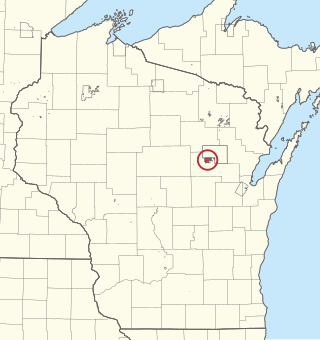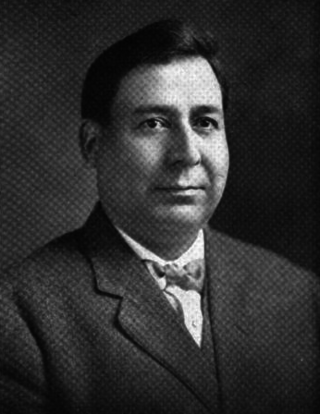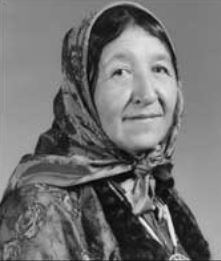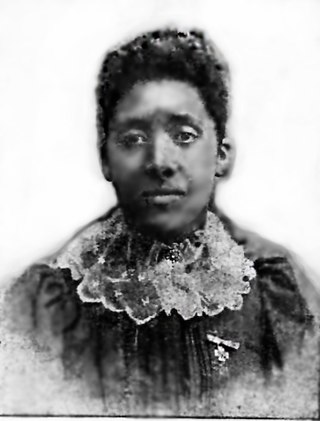
Nancy Cornelius, later known as Nancy Cornelius Skenadore (13 June 1861 - 2 November 1908), was the first Native American woman in the United States to be educated as a nurse. [1] [2] [3] [4]

Nancy Cornelius, later known as Nancy Cornelius Skenadore (13 June 1861 - 2 November 1908), was the first Native American woman in the United States to be educated as a nurse. [1] [2] [3] [4]
Nancy was born on an Oneida tribe reservation. The reservation was located south of Green Bay, Wisconsin. [1] She attended school there, and then enrolled in a training school in Carlisle, Pennsylvania. In October in 1890, she graduated from the Hartford Training School for Nurses in Hartford, Connecticut. [1] [2] [4] She married Daniel Skenadore on Easter Sunday in 1901. [5]
After graduating from the Hartford Training School, she worked in Connecticut. [6] [4] Later, she returned to Wisconsin and began to work at the Oneida Mission Hospital. Most of the time there was no resident physician in the hospital, and so Cornelius shouldered much of the responsibility in the hospital. [1] She was superintendent of the hospital until 1905. [4] She practiced as a nurse until her death in 1908. [2]

The Oneida people are a Native American tribe and First Nations band. They are one of the five founding nations of the Iroquois Confederacy in the area of upstate New York, particularly near the Great Lakes.

Lois Collier was an American actress born in Salley, South Carolina. She was sometimes credited as Lois Collyer.

George Payne McLean was the 59th Governor of Connecticut, and a United States senator from Connecticut.
The Oneida Nation is a federally recognized tribe of Oneida people in Wisconsin. The tribe's reservation spans parts of two counties west of the Green Bay metropolitan area. The reservation was established by treaty in 1838, and was allotted to individual New York Oneida tribal members as part of an agreement with the U.S. government. The land was individually owned until the tribe was formed under the Indian Reorganization Act of 1934.

Nancy Marie Wickwire was an American stage and television actress known for her roles on several daytime soap operas.

The Stockbridge–Munsee Community, also known as the Mohican Nation Stockbridge–Munsee Band, is a federally recognized Native American tribe formed in the late eighteenth century from communities of so-called "praying Indians", descended from Christianized members of two distinct groups: Mohican and Wappinger from the praying town of Stockbridge, Massachusetts, and Munsee (Lenape), from the area where present-day New York, Pennsylvania and New Jersey meet. Their land-base, the Stockbridge–Munsee Indian Reservation, consists of a checkerboard of 24.03 square miles (62.2 km2) in the towns of Bartelme and Red Springs in Shawano County, Wisconsin. Among their enterprises is the North Star Mohican Resort and Casino.

Lillie Rosa Minoka-Hill was an American physician. Although referred to as a Native American woman, Minoka was not a citizen of any Native American tribe. She was told her mother was a Mohawk. Her father was of Quaker descent. Regardless of the uncertainty of her family life, she made the most of education provided by her father. Minoka was educated at a Quaker boarding school in Philadelphia. She attended medical school there, and rare for women at the time, obtained her degree in 1899.

Elias Cornelius Benedict nicknamed Commodore was a New York City banker and yachtsman. He specialized in the gas and rubber industries. He was president of the Commercial Acetylene Gas Company and of the Marine Engine Company. The Benedict Fjord in Greenland was named after him by Robert Peary.

The Church of the Holy Apostles, Oneida, Wisconsin, United States, is a mission congregation of the Episcopal Diocese of Fond du Lac located on the Oneida Reservation of the Oneida Nation of Wisconsin.

Dennison Wheelock was an Oneida band conductor, composer, and cornet soloist of the late 19th and early 20th centuries. Wheelock was compared to prominent bandleader John Philip Sousa, and nominated to be bandmaster of the United States Marine Band. At the age of 40 he became an American Indian rights activist and attorney, and within several years was arguing cases for Indian nations at the United States Court of Claims and US Supreme Court.

Cornelius Hill or Onangwatgo was the last hereditary chief of the Oneida Nation, and fought to preserve his people's lands and rights under various treaties with the United States government. A lifelong Episcopalian, he was ordained a priest of the Episcopal Church in the United States of America at age 69, and ministered to his people until shortly before his death.

Laura Cornelius Kellogg was an Oneida leader, author, orator, activist and visionary. Kellogg, a descendant of distinguished Oneida leaders, was a founder of the Society of American Indians. Kellogg was an advocate for the renaissance and sovereignty of the Six Nations of the Iroquois, and fought for communal tribal lands, tribal autonomy and self-government. Popularly known as "Indian Princess Wynnogene," Kellogg was the voice of the Oneidas and Haudenosaunee people in national and international forums. During the 1920s and 1930s, Kellogg and her husband, Orrin J. Kellogg, pursued land claims in New York on behalf of the Six Nations people. Kellogg's "Lolomi Plan" was a Progressive Era alternative to Bureau of Indian Affairs control emphasizing indigenous American self-sufficiency, cooperative labor and organization, and capitalization of labor. According to historian Laurence Hauptman, "Kellogg helped transform the modern Iroquois, not back into their ancient League, but into major actors, activists and litigants in the modern world of the 20th century Indian politics."

Susie Walking Bear Yellowtail (1903–1981) (Crow-Sioux) was the first Crow and one of the first Native Americans to graduate as a registered nurse in the United States. Working for the Indian Health Service, she brought modern health care to her people and traveled throughout the U.S. to assess care given to indigenous people for the Public Health Service. Yellowtail served on many national health organizations and received many honors for her work, including the President's Award for Outstanding Nursing Health Care in 1962 and being honored in 1978 as the "Grandmother of American Indian Nurses" by the American Indian Nurses Association. She was inducted into the Montana Hall of Fame in 1987 and in 2002 became the first Native American inductee of the American Nurses Association Hall of Fame.
Kirkina Mucko also known as Elizabeth Mukko, (1890-1970) was a Canadian Inuit nurse and midwife. Having lost her legs as a child, and possibly her parents, she was raised in a series of mission homes, hospitals and boarding schools. Returning from abroad around 1908, she worked at the Grenfell Mission in Labrador. After losing family members in the 1918 flu pandemic, Mucko trained as a nurse and midwife, providing services for her community until her later years. A women's shelter in Rigolet has been named in her honor.

Emma Ann Reynolds (1862-1917) was an African-American teacher, who had a desire to address the health needs of her community. Refused entrance to nurses training schools because of racism, she influenced the creation of Provident Hospital in Chicago and was one of its first four nursing graduates. Continuing her education, Reynolds became a medical doctor serving at posts in Texas, Louisiana and Washington, D.C. before permanently settling in Ohio and completing her practice there.
There were ten American Indian Boarding Schools in Wisconsin that operated in the 19th and 20th centuries. The goal of the schools was to culturally assimilate Native Americans to European–American culture. This was often accomplished by force and abuse. The boarding schools were run by church, government, and private organizations.

Cora Elm was an American nurse. She was a member of the Oneida Nation, and attended the Carlisle Indian Industrial School from 1906 to 1913. She served as a Red Cross nurse in France during World War I.
Mary Cornelius Winder was a Native American activist who wrote a series of letters to the federal government related to Oneida Indian Nation ancestral land claims.

Emily Pierson was an American suffragist and physician. Early in her career, Pierson worked as a teacher, and then later, as an organizer for the Connecticut Woman Suffrage Association (CWSA). After women earned the right to vote, she went back to school to become a physician in her hometown of Cromwell, Connecticut. During much of her life, she was interested in socialism, studying and observing in both Russia and China.